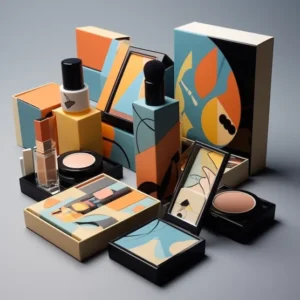In an era marked by a growing emphasis on environmental consciousness, the beauty industry has witnessed a transformative shift towards sustainability. Sustainable makeup products, designed with eco-friendly principles, have become a beacon of change, offering consumers the opportunity to indulge in glamour while minimizing their environmental footprint. This exploration delves into the realm of eco-friendly glam, exploring the key characteristics, innovations, and the impact of sustainable makeup products on the beauty landscape.
Characteristics of Sustainable Makeup:
1. Ethical Sourcing:
Sustainable makeup products often prioritize ethically sourced ingredients. Brands are mindful of the environmental impact and social implications of sourcing raw materials. This commitment extends to avoiding ingredients linked to deforestation, unethical labor practices, or environmental degradation.
2. Biodegradable Packaging:
A hallmark of sustainable makeup is packaging designed with biodegradability in mind. Brands are opting for eco-friendly materials such as cardboard, bamboo, or compostable plastics. Biodegradable packaging reduces the environmental impact of cosmetic waste, offering an alternative to traditional, non-recyclable materials.
3. Minimalist Formulations:
Sustainable makeup embraces minimalist formulations, focusing on quality rather than quantity. This approach minimizes the use of unnecessary chemicals, preservatives, and fillers, ensuring that products are both effective and environmentally friendly. Clean and simple ingredient lists are a common feature of sustainable beauty.
4. Refillable Options:
To reduce packaging waste, many sustainable makeup brands offer refillable options. Users can purchase a durable, reusable container and refill it with product as needed. This not only reduces the amount of packaging going to waste but also encourages long-term use of the original container.
5. Cruelty-Free and Vegan:
Sustainability often extends to ethical considerations for animals. Sustainable makeup products are frequently cruelty-free, meaning they are not tested on animals. Additionally, many products are vegan, excluding animal-derived ingredients, aligning with a broader ethical and environmentally conscious lifestyle.
Innovations in Sustainable Makeup:
1. Plant-Based Formulas:
The rise of plant-based formulations is a notable innovation in sustainable makeup. Brands are harnessing the power of botanical ingredients to create products that are not only effective but also eco-friendly. Plant-based alternatives are used for pigments, emollients, and other cosmetic components.
2. Zero-Waste Initiatives:
Some sustainable makeup brands are pioneering zero-waste initiatives, aiming to minimize waste throughout the product lifecycle. This includes innovative designs for reusable packaging, biodegradable product components, and comprehensive recycling programs.
3. Waterless Formulations:
Water is a commonly used ingredient in cosmetics, but sustainable makeup brands are exploring waterless formulations. This reduces the environmental impact associated with water usage in production and eliminates the need for preservatives commonly found in water-based products.
4. Upcycled Ingredients:
Upcycling involves repurposing byproducts or waste from other industries to create cosmetic ingredients. Sustainable makeup brands are increasingly incorporating upcycled materials, such as fruit peels or plant extracts derived from agricultural leftovers, into their formulations.
5. Carbon-Neutral Practices:
Brands committed to sustainability are adopting carbon-neutral practices. This involves measuring, reducing, and offsetting carbon emissions associated with the production, transportation, and packaging of makeup products. Carbon-neutral certifications are becoming a symbol of environmental responsibility.
Impact on the Beauty Landscape:
1. Consumer Awareness and Demand:
The rise of sustainable makeup is closely tied to a shift in consumer consciousness. As awareness of environmental issues grows, consumers are actively seeking products that align with their values. The demand for sustainable makeup has led to a significant market shift, prompting more brands to adopt eco-friendly practices.
2. Industry Accountability:
The prominence of sustainable makeup has increased industry accountability. Consumers, as well as advocacy groups, are holding beauty brands accountable for their environmental practices. This scrutiny has led to greater transparency in ingredient sourcing, production processes, and overall sustainability efforts.
3. Innovation and Competition:
The surge in sustainable makeup has fueled innovation and healthy competition within the beauty industry. Brands are actively seeking new ways to reduce their environmental impact, leading to a wave of creativity in formulations, packaging, and business models.
4. Education and Empowerment:
The sustainable makeup movement goes beyond products; it involves educating consumers about the environmental impact of beauty choices. Sustainable brands often empower consumers by providing information about the sourcing, production, and disposal of their products, encouraging more mindful and informed choices.
5. Global Collaboration:
The global nature of the beauty industry has prompted collaborations and partnerships on a global scale to address sustainability challenges. Brands, influencers, and organizations are working together to create a collective impact, sharing best practices and advocating for more sustainable practices industry-wide.
Conclusion: A Beautiful Tomorrow
Eco-friendly glam represents more than a trend; it embodies a commitment to a beautiful tomorrow. Sustainable makeup products showcase the industry’s evolving values, embracing a harmonious relationship between beauty and environmental responsibility. As innovation continues to drive the development of eco-friendly formulations and practices, the beauty landscape is undergoing a transformation that aligns with the collective vision of a more sustainable and beautiful future.



